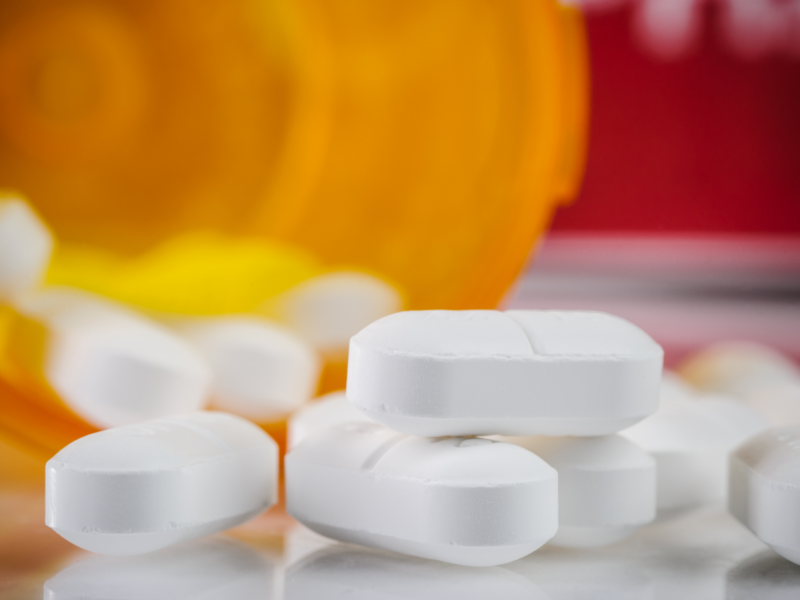Increases in Number and Severity of Suicide-Related Calls to U.S. Poison Control Centers Involving Over-the-Counter Pain Relievers
Increases in Number and Severity of Suicide-Related Calls to U.S. Poison Control Centers Involving Over-the-Counter Pain Relievers https://pediatricsnationwide.org/wp-content/uploads/2019/05/AdobeStock_91559062-header-1024x575.jpg 1024 575 Laura Dattner Laura Dattner https://pediatricsnationwide.org/wp-content/uploads/2023/03/LauraDattner-web-002.jpg- October 06, 2020
- Laura Dattner

Experts call for increased regulation, prevention efforts.
Over-the-counter (OTC) analgesics such as acetaminophen, ibuprofen and acetylsalicylic acid (aspirin) have long been a staple in households for managing pain, fevers and other common ailments. However, the accessibility of these medications can make them easy to take in dangerous amounts.
In a new study, researchers at the Center for Injury Research and Policy and the Central Ohio Poison Center at Nationwide Children’s Hospital analyzed the 549,807 calls made to Poison Control Centers (PCCs) in the U.S. for suicide-related cases involving OTC analgesics from 2000 through 2018 and found that both the overall number and rate of these cases increased significantly by 57% and 34%, respectively, during this period. This trend was driven primarily by the increasing exposures among 6-19-year-old females.
The study, published in Pharmacoepidemiology and Drug Safety, found that children between the ages of 6 and 19 years accounted for half of all suicide-related OTC analgesics cases (50%) and females represented 73% of cases among individuals of all ages.
In addition to the increase in the number and rate of cases, there was also an increase in the severity of the exposures. The proportion of calls resulting in a serious medical outcome or admission to a health care facility increased significantly (a 64% increase and 29% increase, respectively) over the study period. The proportion of cases resulting in a serious medical outcome or admission also increased with increasing age.
“Because they are easy to purchase and can help alleviate a variety of symptoms, many families have over-the-counter pain relievers readily available in their homes, often in large quantities,” says Alexandra Funk, PharmD, D.ABAT, co-author of the study and director of the Central Ohio Poison Center at Nationwide Children’s. “Unfortunately, the easy access to these medications is likely a big part of the reason that they are used in suicide attempts and deaths. The fact that they are being used more often with more serious outcomes is cause for concern.”
“Too often OTC medications are not viewed as potential sources of overdose or self-harm,” adds John Ackerman, PhD, suicide prevention coordinator for the Center for Suicide Prevention and Research at Nationwide Children’s, who was not involved in the study. “Data from this study suggest we should challenge this assumption. Youth in emotional distress will often access what is most readily available, and so, OTC analgesics should be part of discussions of medication safety that primary care providers routinely have with parents.”
Nearly half (48%) of cases involved acetaminophen alone, followed by ibuprofen (33%), and aspirin (19%). Acetaminophen and aspirin disproportionately accounted for 65% and 33% of deaths, respectively. In addition, aspirin resulted in the greatest proportion of serious medical outcomes (36%) and admissions to a health care facility (68%) when compared with the other analgesics. The rates of suicide-related cases involving acetaminophen and ibuprofen increased during the study, while the rate of aspirin cases decreased.
Almost one-third of cases involved exposure to multiple substances (32%), and those cases were twice as likely to have a serious medical outcome and almost twice as likely to be admitted to a health care facility compared with individuals exposed to a single substance.
“Importantly, there is no reason to believe that suicide attempts using medication or OTC analgesics are less serious or ‘attention-seeking’ – which is a common misperception,” says Dr. Ackerman. “Females are over-represented in medication-related overdose attempts, and this may be in part due to perceptions that there is less pain involved or it is a less aggressive method. However, there is limited data to support method is linked to desire to end one’s life . All attempts should be treated seriously because, as the data show, serious harm can be the outcome of any attempt. Upstream prevention is critical to identify those at risk and preventing access to lethal means.”
For example, Dr. Ackerman recommends the following steps for pediatricians and families to limit access and risk:
- Ask directly where and how medications are stored (for all places a young person will stay)
- Always keep medications including OTC analgesics locked away and out of the reach of youth
- Have a family conversation about the dangers of misusing medications
- Dispose of medications after the period they are prescribed
Even further upstream, Dr. Smith suggests that packaging could be an important approach to reduce the suicidal use of OTC medications.
“An important first step to reduce the suicidal use of over-the-counter analgesics would be to require unit-dose packaging, or ‘blister packs,’ for all solid forms of acetaminophen and aspirin sold to consumers. Because suicidal ingestion is often a highly impulsive act, this would deter overdoses by limiting the amount of medication that can be extracted at one time,” says Gary Smith MD, DrPH, senior author of the study and director of the Center for Injury Research and Policy at Nationwide Children’s. “In addition, the U.S. should follow the lead of other countries that have successfully reduced suicidal ingestions of these medications by limiting the package size and quantity that can be purchased by an individual at one time.”
Dr. Smith adds, “Remarkably, the top three substance categories associated with suicide-related ingestions in the U.S. are antidepressants, over-the-counter analgesics and antipsychotics, and of these, over-the-counter analgesics is the only one readily available without a prescription or other restrictions.”
Data for this study were obtained from the National Poison Data System, which is maintained by the American Association of Poison Control Centers (AAPCC). The AAPCC receives data about calls to regional poison control centers that serve the US and its territories. Poison control centers receive phone calls through the Poison Help Line and document information about the product, route of exposure, individual exposed, exposure scenario, and other data.
If you or your child are feeling suicidal, talk to someone. Call the National Suicide Prevention Lifeline at 1-800-273-TALK (8255) or the Youth Psychiatric Crisis Line for Franklin County residents at (614) 722-1800; connect to the Lifeline Crisis Chat at crisischat.org; or reach the Crisis Text Line by texting “START” (or in Ohio, “4HOPE”) to 741-741.
If you ever have immediate/urgent concerns about your safety or the safety of anyone else, call 911.
If you believe an overdose has occurred, call the national Poison Help hotline at 1-800-222-1222.
Among children and young adults ages 5-21, warning signs of suicide can vary. Information about suicide warning signs, resources for suicide prevention and resources for families, including those who have lost a loved one to suicide, are available at NationwideChildrens.org.
Recommendations for reporting on suicide can be found here: mha.ohio.gov/suicidereporting.
Reference:
Hopkins AG, Spiller HA, Kistamgari S, Zhu M, Michaels NL, Funk AR, Smith GA. Suicide-related over-the-counter analgesic exposures reported to United States poison control centers, 2000-2018. Pharmacoepidemiology and Drug Safety. 2020 July 26;29(9):pds.4997.
Image credit: Adobe Stock
About the author
Laura Dattner, MA, is a research writer in the Center for Injury Research and Policy of the Abigail Wexner Research Institute at Nationwide Children’s Hospital. With both a health communications and public health background, she works to translate pediatric injury research into meaningful, accurate messages which motivate readers to make positive behavior changes.
-
Laura Dattnerhttps://pediatricsnationwide.org/author/laura-dattner/
-
Laura Dattnerhttps://pediatricsnationwide.org/author/laura-dattner/April 4, 2019
-
Laura Dattnerhttps://pediatricsnationwide.org/author/laura-dattner/
-
Laura Dattnerhttps://pediatricsnationwide.org/author/laura-dattner/
- Posted In:
- In Brief









